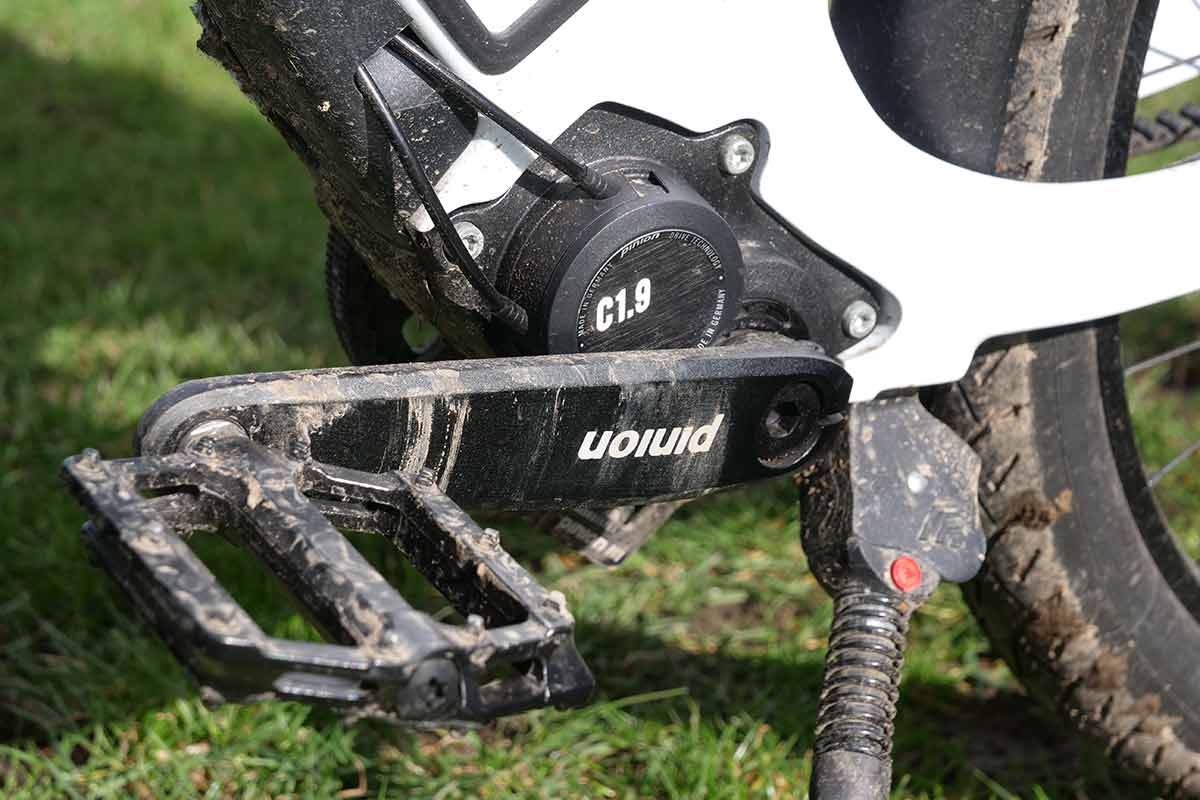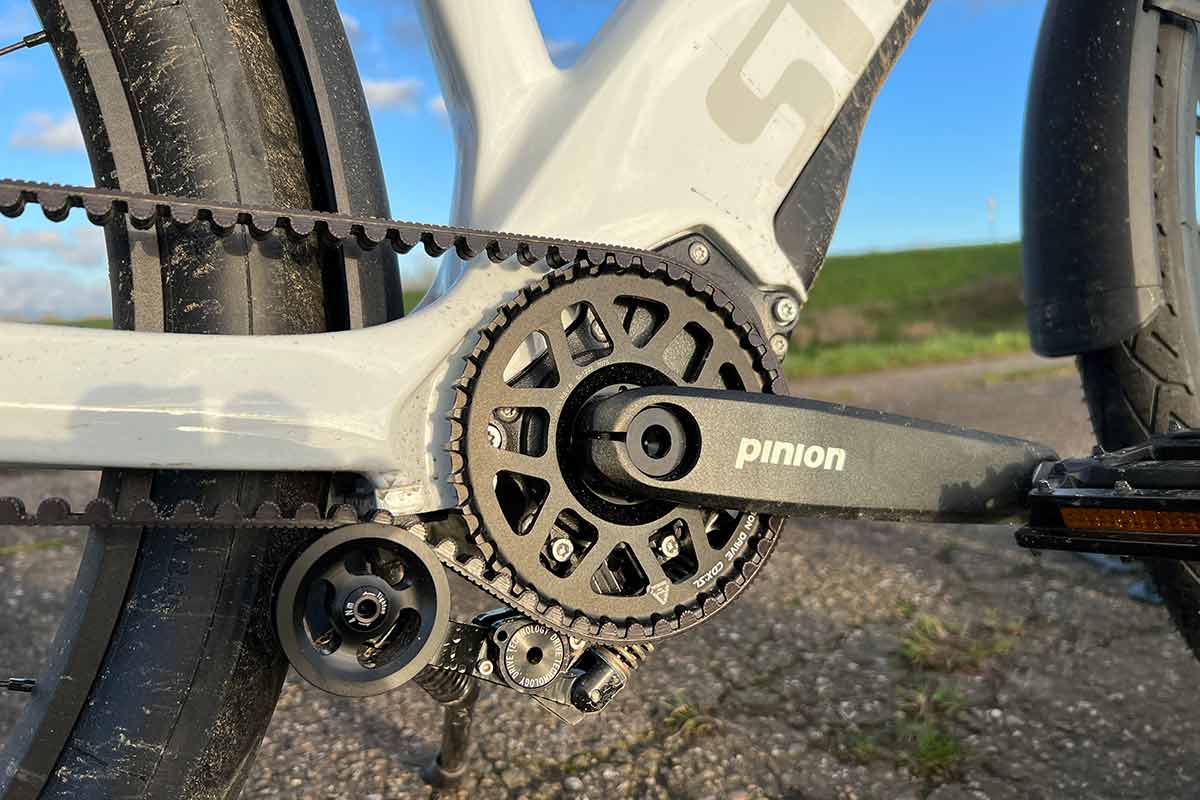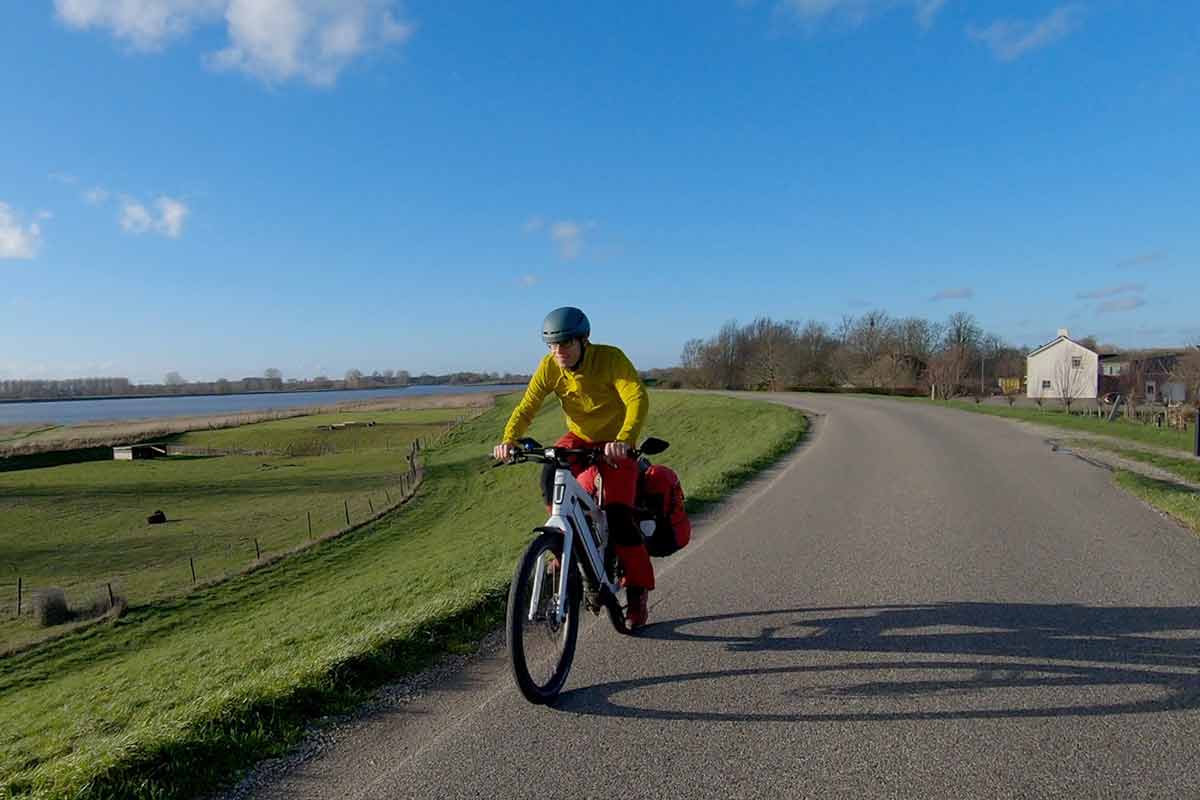Ever since I had a ride on a bike with a Pinion gearbox, I have been hooked on the Pinion system. 6 to 18 gears in a small metal box the size of a melon, a compressed summer sleeping bag or a Nalgene bottle. In this article I’ll try to explain what a Pinion Gearbox is and what I like about it.
Unlike all the other gears systems the Pinion-system is not positioned in the rear wheel, but in the bottom bracket location. In fact, the bottom bracket is part of the Pinion and the Pinion itself is part of the frame. This is also the reason why it took a relatively long time before the Pinion gearbox came onto the market on a large scale: after all, as a bicycle builder you have to make special Pinion frames.
Gearbox of a car
The Pinion gearbox – as seen in the Stromer ST3 Pinion speed-pedelec review – can best be compared to the manual transmission or gearbox of a car, motorcycle, trucks etc. A manual transmission or gearbox consists of a series of gears on several axles that are brought into the correct position by a gear lever or gear stick (or stick shifter if you are from the US). This technique in changing gears has proven itself since cars with manual transmission started around 1900. In the case of a bike this gear lever is a rotary-style shifter on the left side of the handlebar.
4 different configurations
The Pinion gearbox is available in different configurations. The most common series for normal bikes, e-bikes and speed-pedelecs are the C1.6, the C1.9 and the C1.12 with 6, 9 and 12 gears inside that sweet little gearbox. For mountain bikes, gravel bikes and bikes that travel the world Pinion designed the P-line that comes in a P1.12 with 12 gears and the P1.18 with 18 gears.

Weight
A gearbox that has car-like features… Sounds heavy and bulky. The opposite is the case. In a world where we are accustomed to e-bikes with a Bosch mid engine the Pinion is pretty small; most people don’t even notice that it’s there. The weight varies from 2700 grams for the extremely robust P1.18 to a mere 1800 grams for the C1.6. And yes: more gears means more weight. The weight in comparison to for example a 14-speed internal gear hub or an external drivetrain with a front and rear derailleur is not that much different.
The beauty of the Pinion is that this weight is in the heart of the bike and also is positioned very low, which is good for the center of gravity and the riding characteristics.

Gear range
Gears are also often referred to as the range of gears and the steps between gears. That may require some explanation. Range means as much as pedaling very slowly when you have a downwind at full speed (and riding downhill) and pedaling as lightly as possible when the wind is against you (and riding uphill). The wider this range, the ‘greater’ the area of use of the bicycle.
Range is indicated in percent.
The range of the C1.6 is 295% and the steps between gears is a fixed 24,3%. The range of the C1.9 is 568% and the steps between gears is the same as the C1.6 a fixed 24,3%. The C1.12 and P1.12 have a range of 600% and with fixed steps 17.7%. The range of the P1.18 is 636% and the steps between gears is a fixed 11.5%.
For comparison: a Rohloff 14-speed hub has a range of 526% and a 3 X 10 derailleur gear 573%. The steps between the gears of the Rohloff are between 13.5% and 13.7% and that of the derailleur is too variable to give an average.
Maintenance
If we compare the Pinion system with a 14-speed internal gear hub from Rohloff or Shimano or an external drivetrain with a front and rear derailleur, the latter is the combination that needs the most maintenance. Everything is open and exposed and dirt and water can do their devastating work freely. The others are insensitive to water and dirt as a gear, but it depends on whether it is mounted in combination with a chain or a belt. A belt requires little maintenance, the former requires regular lubrication.
If we look at the gears themselves, Rohloff prescribes that the hub must be flushed with oil every 5000 km or once a year. Pinion also needs maintenance every year or every 10,000 km. The question remains: how long will they last? Rohloff gives a 2-year warranty and there are now enough Rohloffs with more than 100,000 km on the clock. Pinion gives a 5-year warranty.
The key question: What do I think of it?
Ever since Pinion gearboxes appeared on mountainbikes, trekkingbikes and E-and S-bikes I liked them. The gearboxes are solid build and changing gears go’s smoothly and almost silently. The fixed steps between gears feel logical. The range of 636% on the P1.18 is huge and works from the Dutch lowlands to the mountains in Switzerland; the C1.9 with 568% is fine as a middle off the road choice.
A big difference with – for example the Rohloff hub – is that with the Pinion I have to take some pressure off the pedals when shifting gears. With the Rohloff you can also shift when you apply force on the pedals.
I do prefer the position of the Pinion in the heart of the frame above a rear wheel hub. Its middle of the frame is the ideal spot for a low center of gravity and control of the bike. I don’t find the fact that the Pinion in general is a bit heavier than the others a problem.

Last thoughts
That a Pinion is more expensive than the other gear systems does not bother either since it is very maintenance friendly and bullet proof. Something I had to get used to is a little free play you get when you’ve held the pedals still for a while. Also, on some bikes, the ratchet of the freewheel could really be quieter. But both remarks apply to older Pinion gearboxes. On the latest bike reviewed – the Stromer ST3 Pinion – both remarks are gone. All in all I do like the Pinion system and especially together with a Gates Carbon belt drive it is my preferred driveline for trekking bikes and E- and S-bikers.
Information
Link to the manufacturer: www.pinion.eu
